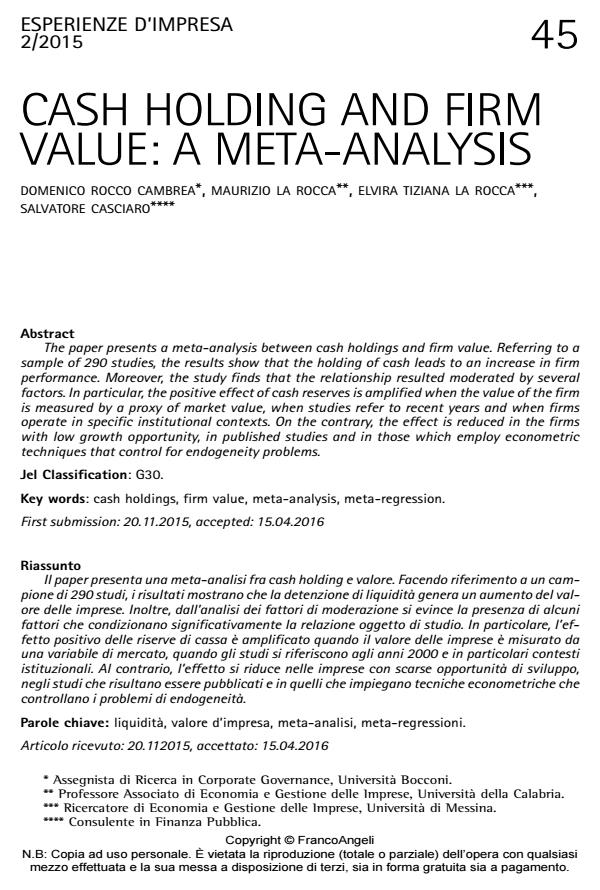Cash holding and firm value: a meta-analysis
Journal title ESPERIENZE D'IMPRESA
Author/s Domenico Rocco Cambrea, Maurizio La Rocca, Elvira Tiziana La Rocca, Salvatore Casciaro
Publishing Year 2017 Issue 2015/2
Language English Pages 28 P. 45-72 File size 227 KB
DOI 10.3280/EI2015-002002
DOI is like a bar code for intellectual property: to have more infomation
click here
Below, you can see the article first page
If you want to buy this article in PDF format, you can do it, following the instructions to buy download credits

FrancoAngeli is member of Publishers International Linking Association, Inc (PILA), a not-for-profit association which run the CrossRef service enabling links to and from online scholarly content.
The paper presents a meta-analysis between cash holdings and firm value. Referring to a sample of 290 studies, the results show that the holding of cash leads to an increase in firm performance. Moreover, the study finds that the relationship resulted moderated by several factors. In particular, the positive effect of cash reserves is amplified when the value of the firm is measured by a proxy of market value, when studies refer to recent years and when firms operate in specific institutional contexts. On the contrary, the effect is reduced in the firms with low growth opportunity, in published studies and in those which employ econometric techniques that control for endogeneity problems. .
Keywords: Cash holdings, firm value, meta-analysis, meta-regression.
Jel codes: G30
Domenico Rocco Cambrea, Maurizio La Rocca, Elvira Tiziana La Rocca, Salvatore Casciaro, Cash holding and firm value: a meta-analysis in "ESPERIENZE D'IMPRESA" 2/2015, pp 45-72, DOI: 10.3280/EI2015-002002